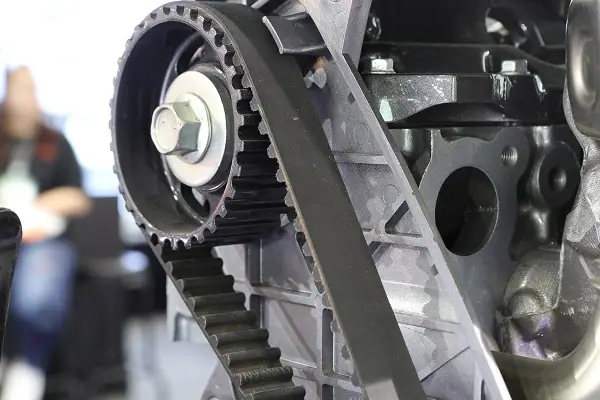How to Make Timing Belt Last Longer? -Causes for Replacement
Are you looking for some tips on how to make timing belt last longer? In this article, you will know the causes of timing belt breaks and a few tips to make your timing belt last longer. If you faced any timing belt problems after replacement, you should follow our guidelines.
How to Make Timing Belt Last Longer?
Here are a few tips to help make your timing belt last longer:
- Follow the manufacturer’s recommended replacement schedule: The timing belt on your vehicle is designed to last for a certain number of miles or years. Be sure to follow the manufacturer’s recommendations for a replacement to ensure that your timing belt lasts as long as possible.
- Keep the timing belt tensioned correctly: A loose timing belt can cause excessive wear and shorten its lifespan. Make sure the belt is tensioned correctly and adjust it if necessary.
- Keep the timing belt cover clean: A dirty timing belt cover can cause debris to get into the belt, which can cause damage and wear. Keep the cover clean to help protect the belt.
- Use the right type of belt: Make sure you use the correct type of timing belt for your vehicle. Using the wrong belt can cause it to wear out faster or even break.
- Avoid high engine speeds: High engine speeds can cause excessive wear on the timing belt. Try to avoid prolonged high-speed driving as much as possible.
- Regularly check for leaks: Leaks from the engine can cause damage to the timing belt. Regularly check for leaks and fix them as soon as possible.
- Have a professional mechanic check it: Have a professional mechanic check the timing belt for wear and tear during regular services.
By following these tips, you can help to ensure that your timing belt lasts as long as possible and avoid costly repairs. Hope, you learned how to make timing belt last longer.
While timing belt replacement is unavoidable, there is a way to protect it so it lasts longer, thus reducing the need for frequent replacements. As with most everything in life, maintenance is key.
Timing Belt dressing is enough to increase the lifetime of a timing belt. You can use WD-40 which penetrates the cord fibers of the belts to restore suppleness and elasticity and helps eliminate squeaking and slipping.
FAQ about Make Timing Belt
Why my Timing Belt doesn’t Last Longer?
One of the main reasons a timing belt may not last as long as expected is due to an incorrect replacement schedule. If the timing belt is not replaced at the manufacturer’s recommended intervals, it can become worn out prematurely.
Another reason could be improper maintenance, if the timing belt is not properly cleaned or protected from exposure to heat, chemicals, or debris, it can cause damage to the belt and make it wear out more quickly.
Tensioner failure is another reason, the tensioner is responsible for keeping the timing belt tight and in the correct position. If the tensioner fails, the timing belt can slip or become loose, causing it to wear out more quickly.
Pulley misalignment can also cause the timing belt to wear prematurely or even break. It is important to have a professional mechanic to diagnose the issue and recommend the appropriate course of action.
Regular maintenance and timely replacement of the timing belt can help to ensure that it lasts as long as possible.
What are the causes of timing belt breaking?
A timing belt can break due to a variety of reasons, including age and wear, improper tension, exposure to heat and chemicals, and misalignment or damage to the pulleys. Additionally, a timing belt that is not properly maintained or replaced at the recommended intervals may also be more likely to break.

What are timing belt problems after replacement?
There are several potential problems that can occur after a timing belt replacement, including:
- Improper installation: If the timing belt is not properly installed, it can cause engine damage or misalignment of the camshaft and crankshaft.
- Tensioner failure: The tensioner is responsible for keeping the timing belt tight and in the correct position. If the tensioner fails, the timing belt can slip or become loose.
- Pulley misalignment: If the pulleys that the timing belt runs on are not properly aligned, it can cause the timing belt to wear prematurely or even break.
- Leaking oil or coolant: Timing belts can be damaged if they come into contact with leaking oil or coolant.
- Loose or damaged components: If any other components in the timing belt system, such as the idler pulley or water pump, are loose or damaged, it can cause the timing belt to fail.
- Not changing other components: Timing belts are usually recommended to change along with other components such as the water pump, tensioner, etc. if not changed can cause problems.
It is important to have a professional mechanic to diagnose and fix any problems with a timing belt after replacement.
Final Words on How to Make Timing Belt Last Longer
To make a timing belt last longer, it’s important to follow the manufacturer’s recommended replacement schedule, maintain proper tension, keep the timing belt clean, check pulley alignment, regularly check for leaks and other damage and change other components recommended by the manufacturer at the same time of timing belt replacement.
Regular maintenance and inspections by a professional mechanic can also help to extend the life of the timing belt and prevent costly repairs. By following these steps, the timing belt can last as long as possible and help to ensure the smooth running of the engine.
I hope you enjoyed the article “how to make timing belt last longer”. If you have any suggestions on how to make timing belt last longer, you can share them with us by commenting below. Thanks!
You May Like to Read Articles

